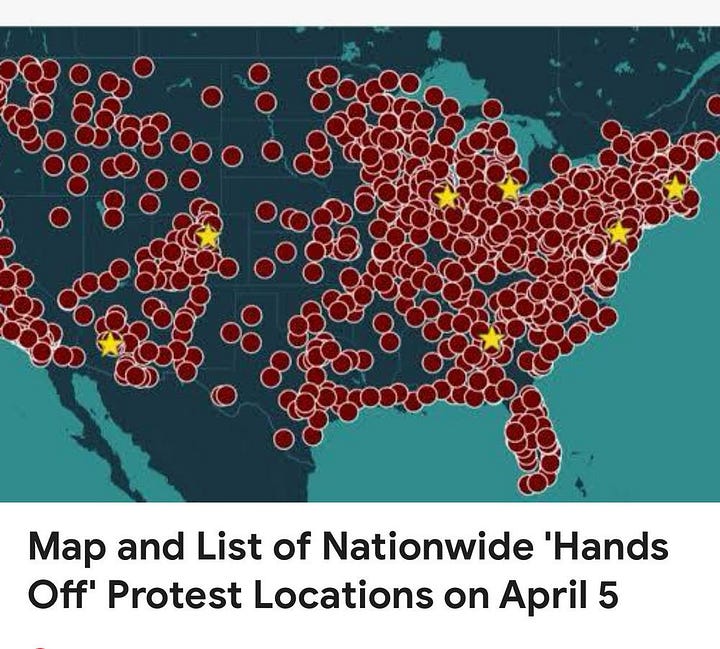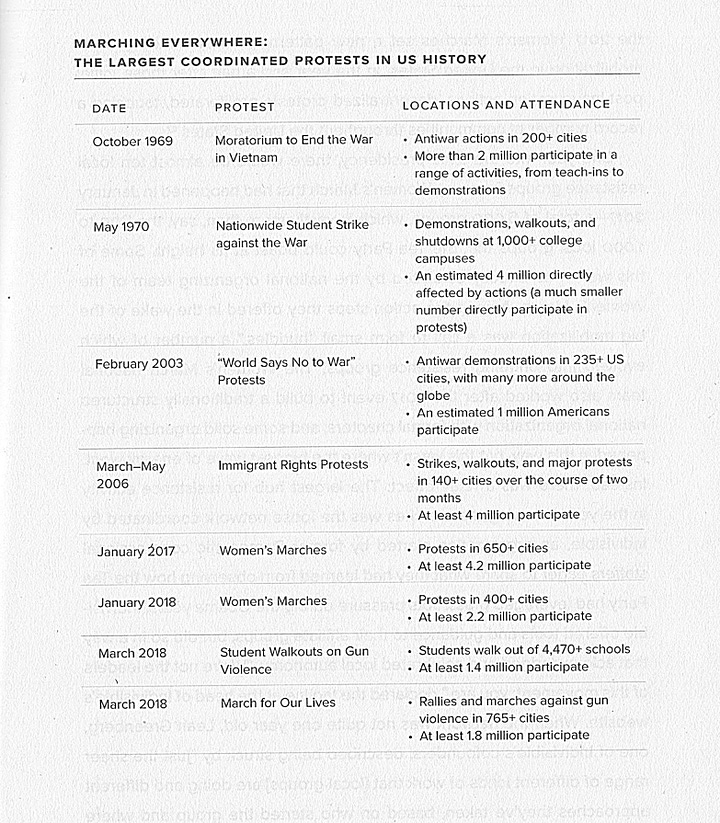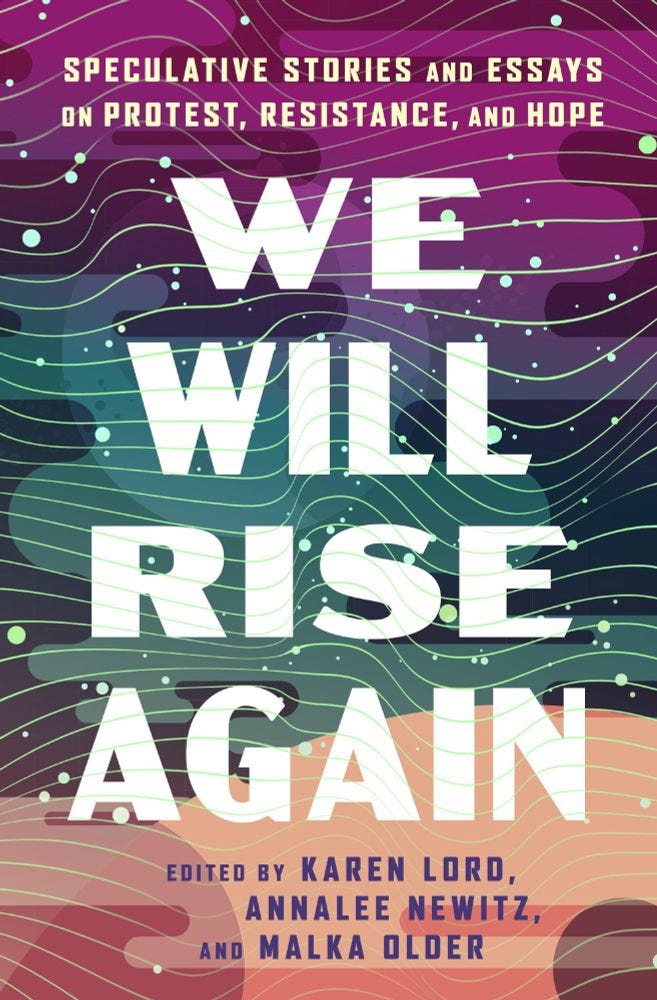Welcome to Briefings, a newsletter on organizing and strategy. Here I'll offer insights on how everyday people can promote freedom, democracy, and dignity amid rising authoritarianism, drawing on my long experience as a grassroots leader and movement analyst. I'll also share organizing resources, updates on my work, and occasional materials from my archive. Please consider a paid subscription to support my work.
This is an invitation: Think about what you can be doing to spread courage in these deeply unsettling times.
Authoritarian regimes thrive on fear, and fear has been spreading as rapidly through American society as, well, an unchecked virus. (Sigh.) Amid the shocking assault on our freedoms, rights, and livelihoods, we've seen institutions capitulate, leaders go silent, people self-censor, cultural figures bend the knee. Our feeds are full of bad news, ominous predictions, and fear-inducing content.
Yet we are also living through a time of great courage. Everywhere you look, there are people engaging in active noncooperation with authoritarianism.
We've seen millions of Americans refuse to be cowed into silence: gathering in peaceful public protest, speaking out at town hall meetings, inundating their representatives with phone calls and emails. We've seen people everywhere refusing to cooperate with ICE: sharing know your rights information, protecting vulnerable community members. We've seen mutual aid networks helping pregnant people secure reproductive care and transgender people secure identity documents. We've seen people building sanctuary and solidarity networks. We've seen companies and colleges and universities stand up for democratic values. We've seen organizations boldly fighting back in the courts. We've even seen some politicians – far too few, still – take courageous stands.
One way to help acts of courage spread is to actively, effusively celebrate them.
Every army knows the importance of morale. So does every sports team, every company, and every organization. Our pro-democracy movement of many movements can't treat morale as an afterthought and hope to win.
Ask yourself: Who in your community is standing up for democracy, dignity, and decency? How can you thank them? How can you celebrate them? How can you join them?
These might be:
people who have protected community members from ICE
universities that are resisting government pressure
law firms that are refusing to bend the knee
organizations helping pregnant people get abortion care
groups helping transgender people access identity documents
libraries that refuse to ban controversial books
companies that have reaffirmed their support for DEI
leaders of any kind who have spoken out in public
You might send them an email, or a handwritten thank you note. You might lift them up on social media. You might write a letter of praise for publication in your local paper. You might bring them up in conversation. You can take inspiration from their example and think about how you, too, can engage in noncooperation.
How about gathering some friends and neighbors for a “Spread Courage” party? Like postcarding for elections, but with the aim of boosting morale. Start by brainstorming a list together of who you want to celebrate and thank. You can send thank-you texts and emails right then, or write postcards or thank-you notes to send in the mail.
Are you part of an organized group? Protests aren't the only way to gather our folks in public. To alternate with demonstrations, consider holding celebrations, where you gather to lift up acts of courage and our collective values of democracy, justice, and freedom.
Let me know if these suggestions inspire you, and how you've put them into practice. I'll highlight responses in a future newsletter.
April 19 witnessed another round of protests around the country, coordinated by 50501, a recently formed network “to uphold the Constitution and end executive overreach.” There were about 700 protests this time. That's about half the number of protests that happened on April 5, but I want to underscore it's still a very large number.
I shared some reflections on Bluesky in the immediate aftermath of the April 5 “Hands Off” actions about just how remarkably large that mobilization was. The total number of participants (approximately 3 million) made it one of the largest single days of coordinated protest action in U.S. history.
Even more striking and significant to me, however, was the geographical breadth of the day's grassroots outpouring. There were protests in some 1400 locations throughout the U.S. and the world, including many smaller towns where demonstrations are rare sights.
There are only a handful of times in U.S. history when we've seen people taking action in so many places at the same time. Here's a map of the day’s actions alongside a chart from my 2018 book, How to Read a Protest, featuring the largest coordinated days of protests up until that date. (The 2020 Black Lives Matter uprising was dramatically larger and remains by far the largest protest mobilization in U.S. history.)


As you can see, even the smaller number we saw on April 19 – 700 coordinated protests on a single day – is quite significant in historical terms. Amid the barrage of stressful news, take a measure of heart and courage from the fact that people are feeling moved to public action in so many communities, large and small, all across the country.
Of course these protests are not going to bring down the Trump-Musk regime overnight. But what they have done, immediately and quite powerfully, is raise people’s morale. The stunned silence in the first weeks of the Administration is giving way to public defiance.
The protests have also made popular discontent with the Trump administration’s actions much more visible at the local level. National media coverage may be scattered and tepid, but there were many news stories in local outlets, where coverage hits differently — and thousands of images shared across many platforms. These effects alone are strategically valuable right now, one important piece of a multi-pronged fightback.
I'll write more about the strategic impact of decentralized, distributed protests like these in a future issue of this newsletter. Suffice to say for now that a movement with this many nodes and leaders is very difficult for even the most determined autocrat to shut down.
At least two more days of action are planned in the coming weeks: May Day 2025 and June 6: Stand With Veterans.
Resource: The All of Us Directory is a searchable database of progressive organizations that are actively seeking new volunteers and members, compiled and vetted by a team of highly respected veteran organizers. You can search by location, focus area, and activity type.
I'm really honored to have some of my thoughts on organizing and activism included in We Will Rise Again: Speculative Stories and Essays on Protest, Resistance, and Hope, edited by Karen Lord, Annalee Newitz, and Malka Older.
Check out the gorgeous cover and extraordinary list of contributors. The book will be out in December and is available for preorder now.


Thanks for reading this first issue of my newsletter. This newsletter is a work in progress in a time of great uncertainty. Publication frequency is to be determined, but I will certainly publish at least once a month and probably more often.
Please forward and share widely, and consider a paid subscription to support my writing and organizing work.



I'm wondering what you think about civil disobedience as a strategy at this time. Do we still have political space for certain kinds of CD? Or is the risk unacceptably high given hard-line and illegal imprisonments these days? Any differences between crossing a line onto a restricted sidewalk, say vs occupying a federal building, camping out at a congresspersons office etc )